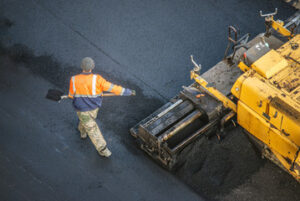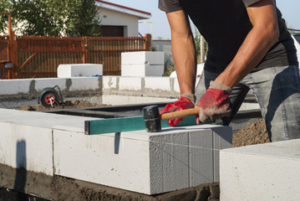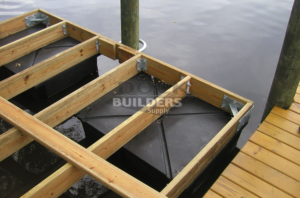Asphalt is a durable material that resists wear and tear. Its high angularity and stiffness make it withstand the pressure that motor vehicles apply.

Asphalt mixes contain aggregate materials bonded with bitumen, a thick, viscous substance made from petroleum byproducts. The asphalt is mixed and heated at high temperatures, making it strong and long-lasting. Contact Asphalt Paving Philadelphia for professional help.
Asphalt is one of the most affordable paving materials and can be laid quickly. It is also highly resistant to various weather conditions, which helps minimize the need for costly repairs. In addition, maintenance is relatively easy, with routine sealcoating and filling in small cracks extending the lifespan of your driveway or parking lot.
Asphalt pavement is made from carefully combining aggregates like gravel, crushed rock, and sand with a black byproduct of petroleum known as bitumen. This is done in a special plant called an asphalt mixing facility. The mix is designed based on the project site’s climate.
The first step in preparing asphalt is to weigh the various components of the mix using a belt-weighing instrument. Then the mixture is preheated or dried at about 300 degrees. This is necessary to make the mix compactable and allow it to be transported to the paving site.
Once the asphalt is ready to be used, it is loaded into dump trucks and sent to the paving site. It must be kept hot at all times, as it cannot be transported when it has cooled. The temperature can be maintained by agitation in the load or by adding additives such as used frying oil, residue from corn stovers, and even treated swine manure.
In addition to maintaining a high temperature, the asphalt needs to be sifted, graded, and mixed to achieve the desired consistency. Then it is compacted and rolled into place to create a strong, durable surface.
During this process, specialized tools are used to create the right texture and thickness of the asphalt for your driveway or parking lot. Professional equipment is faster and more precise than manual tools such as rakes or shovels. It is important to use quality tools, as the more accurate they are, the more efficient your contractor will be.
The dark color of asphalt absorbs sunlight and releases it slowly, which makes it up to 10 degrees warmer than concrete in the same condition. The warm surface can blister a person’s feet if they walk on it wearing flip-flops or other footwear with thin soles. This is why many people wear shoes when walking on an asphalt surface, and also why you should not walk your pets on the surface in the middle of the day during summer.
Durability
Asphalt paving is durable and is an excellent choice for parking lots, streets, and highways. However, it requires regular maintenance to keep it looking good and functioning properly. It can also be damaged by environmental factors, such as excessive traffic and weather conditions. These factors can shorten the life of an asphalt pavement and reduce its lifespan. The best way to prolong the life of your asphalt paving is to keep it clean and protected from UV rays. This can be done by using a cover or by laying darker asphalt. The darker asphalt will prevent the sun’s UV rays from penetrating as deeply into the surface, protecting it from damage.
The life of an asphalt pavement is influenced by many different factors, including its stiffness and resistance to distortion. It must also be flexible and strong enough to withstand the applied pressure of motor vehicles. This is why asphalt is typically used on roads and heavy-duty commercial properties.
When compared to concrete, asphalt is a much more durable material. It can withstand heavy loads and is less susceptible to cracking. It is also easier to repair and maintain than concrete. The process of laying and curing asphalt is also quicker and more cost-effective.
Another factor that influences the durability of an asphalt pavement is its fatigue time. This is determined by the properties of the asphalt, its temperature, and the number of load cycles it experiences. It is important to determine the fatigue limit of the pavement, as this will help in predicting its service life.
Generally, higher density specifications result in a longer service life for an asphalt pavement. However, achieving these high densities can be difficult for contractors because of the challenges of mixing and compaction. In addition, higher densities can increase the cost of an asphalt mixture.
A new method of testing asphalt binders has been developed to evaluate their dynamic stability and fatigue behavior. The technique uses a wheel-tracking test to determine the maximum displacement of the asphalt. This allows the researchers to compare the results of three different asphalt mixtures and to identify their relative performance. The results of the tests show that Superpave-20 has better dynamic stability than SMA-13 and ATB-25. This is because the asphalt binder in Superpave-20 contains more oil.
Noise
Asphalt pavements can produce a high pitched sound when cars drive over them. This is due to the vibration of the tires interacting with the road surface. However, it is easy to reduce the noise with a bit of preventative maintenance and regular sealing by asphalt paving professionals.
Noise is a common complaint from drivers, and it can be a serious issue for local governments. It can interfere with traffic and cause stress to people who live near the roads. To reduce noise, a new type of asphalt has been developed that is less noisy than traditional pavements. This innovative asphalt mix uses recycled materials and is made of porous aggregates, such as seashells. It also contains a low-carbon content and produces fewer fumes than other types of asphalt.
The acoustic properties of asphalt are related to the aggregates and the binders used in the mixture. Many State highway agencies have included acoustic performance as part of their design objectives. To achieve this, a variety of binder types and aggregates are used. Some agencies also restrict the use of recycled materials in order to meet acoustic requirements.
Other factors can influence the noise generated by the road surface, such as its texture, age, and smoothness. For example, roads with a negative texture (air voids between the surface aggregates) tend to be quieter than roads with positive textures. In addition, different vehicles and tyres generate different noises.
While asphalt is a great option for reducing road noise, it cannot be completely eliminated. The loudest noises are produced by heavy trucks and vehicles traveling at high speeds. In these cases, a sound barrier may be necessary.
The impact of an asphalt mixture’s acoustic properties on tire-road noise is often underestimated, as it is only one component of a complex interaction between the road and vehicle. However, the importance of this issue is increasingly recognized and should be incorporated into pavement design criteria.
A roadway’s acoustic properties can be measured using a close-proximity noise measurement technique called the On-Board Sound Intensity (OBSI) method. This measurement consists of directional microphones placed near the vehicle tires and road surface. OBSI has been compared to the more established Close Proximity Measurement (CPX) method, and both are sensitive to pavement characteristics.
Safety
Asphalt paving is a hazardous job. Workers are exposed to fumes, hot materials and heavy equipment. The risk of burns is high, and workers need to wear proper protective gear and be trained in how to safely use the paving equipment. In addition, they must be aware of the hazards associated with working on an interstate highway or near power lines.
Inhalation of asphalt fumes can cause a variety of health problems, including headache, skin rash and fatigue. It can also damage the lungs. In some cases, repeated exposure can lead to cancer of the lungs. To reduce exposure to asphalt fumes, workers should avoid smoking near the work area and wear respirators. The best respirators have a built-in filter to prevent the inhalation of dust particles from the pavement. The workers should also be trained to read the Safety Data Sheets (SDS) for the specific product they are using to understand its hazards.
The liquid asphalt used in paving is stored and transported at extremely high temperatures. If heated above its flash point, it can ignite and release fumes that can be flammable or explosive. It is important to ensure that the flash point of the asphalt is tested and measured, and that it is transferred in containers that are properly labeled and designed for the job. It is also recommended that the work be done in dry weather.
Asphalt can cause burns if it comes into contact with bare skin or if it is splashed onto the eyes. If the burned area is large, medical attention should be sought immediately. Inhalation of asphalt fumes can also cause headaches, dizziness and nausea. The workers should be trained in first aid and CPR.



